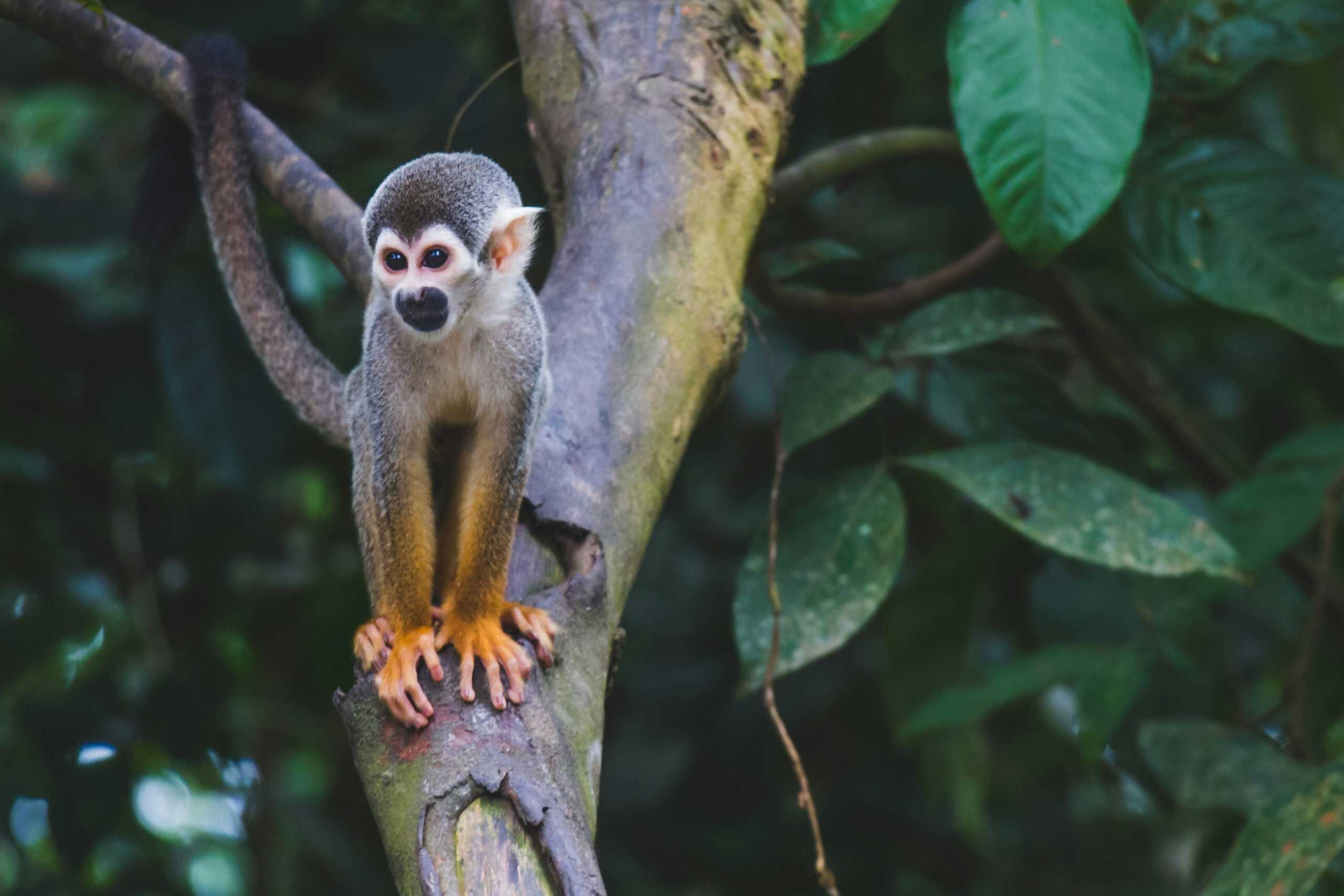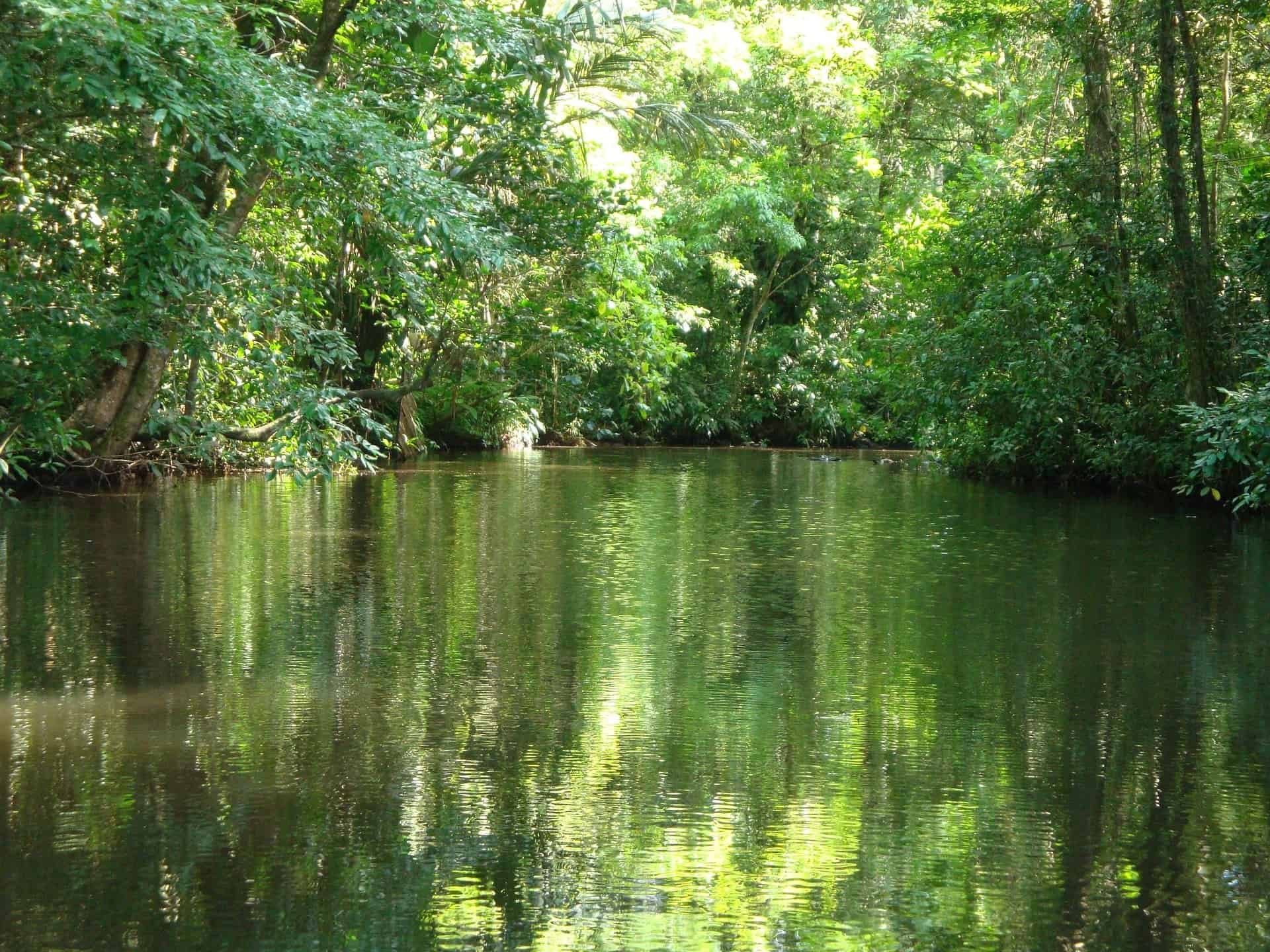Considered to be a wildlife lover’s paradise, Costa Rica is home to tropical forests that are brimming with many different animals, including the Costa Rican monkey. With four unique Costa Rican monkey species, this small yet biodiverse country has some of the most intelligent animals on the planet.
Learn more about Costa Rica’s monkey species and where you can spot these naughty mammals in this guide.
What Are the Types of Monkeys in Costa Rica?
In Costa Rica, you’ll find four species of monkeys, including the following:
Mantled Howler Monkey (Congos)
Also referred to as “Congo” by the locals, the mantled howler monkey (Alouatta palliata) is Costa Rica’s largest monkey species. They’re also the largest Central American monkeys.
Mantled howlers are famous for their loud calls or roars. You can hear them from a mile away. Adult males produce these deep howls using an enlarged hyoid bone in their throats, typically in the morning to communicate or mark their territory.
With dark brown to reddish fur and lighter flanks, mantled howlers can reach up to 23 inches in length. They have long tails that work like a fifth limb.
Despite their intimidating vocalizations, these Costa Rican monkeys are gentle creatures. They primarily feed on young leaves, fruits, and flowers.
Howlers live in social troops of 10 to 20 monkeys. These guys rarely touch the ground. Over the years, their population has declined due to habitat destruction and electrocution from power lines.

Where Can I Find a Mantled Howler Monkey in Costa Rica?
You’ll find howler monkeys across most of Costa Rica’s primary and secondary forests, including those in the Osa Peninsula, Guanacaste, Nicoya Peninsula, Monteverde, Arenal, and the Caribbean coast.
To spot howler monkeys during your Costa Rica adventures, we highly recommend visiting beaches like Tamarindo, Conchal, Ocotal, and Hermosa during the early morning.
White-Faced Monkey (Capuchin Monkey)
Also known as “Cariblanco,” the white-faced capuchin monkey is a small but mischievous creature. It has white fur, a striking black body, and white face and shoulders.
Capuchins eat almost anything, but love fruit the most. They also hunt insects, lizards, birds, and eggs. Don’t let their cute appearance fool you. These resourceful hunters use tools to open oysters and kill snakes. They’re also fantastic seed dispersers.
Due to their extremely curious nature, capuchins are not afraid of humans. These little rascals will frequently steal food from unsuspecting visitors.

Where Can I Find a White-Faced Monkey in Costa Rica?
Capuchins are incredibly adaptable creatures, which is why you’ll see them all across Costa Rica. Some of the best spots to get a glimpse of these monkeys include:
- Osa Peninsula
- Monteverde
- Nicoya
- Arenal
- Palo Verde
- Cahuita
- Tortuguero
Central American Squirrel Monkey (Mono Titi)
Listed as endangered by the International Union for Conservation of Nature (IUCN), the Central American squirrel monkey is a small Costa Rican monkey species that weighs up to 2.5 lbs. It has a reddish-orange back, white face, black crown, and expressive eyes.
Considered to be highly social animals, squirrel monkeys are incredibly active during the day. These creatures move in large groups, sometimes up to 60 monkeys. They also travel long distances in search of food, which may include fruits, flowers, insects, small lizards, frogs, and nectar.
Female squirrel monkeys have a gestation period of 152 to 170 days. After giving birth, the baby monkeys stay close to their mothers for the first few months.

Where Can I Find a Central American Squirrel Monkey in Costa Rica?
Squirrel monkeys stick to the Central and Southern Pacific coastal regions of Costa Rica. You’ll find them most commonly in Manuel Antonio National Park, the Osa Peninsula, and Corcovado National Park.
Geoffroy’s Spider Monkey (Mono Araña)
Also known as “Mono Araña,” the Geoffroy’s spider monkey (Ateles geoffroyi) is the most acrobatic monkey species you’ll encounter in Costa Rica. With long limbs, a powerful prehensile tail, and keen intelligence, these monkeys are built for life in the treetops.
Weighing up to 20 lbs, adult spider monkeys have black to reddish-brown coats. They use their tail to grip branches, effortlessly moving through the dense forests of Costa Rica. These creatures are highly social and live in large groups.
Unlike Old World monkeys, spider monkeys are known to eat wild fruits, young leaves, flowers, and seeds. Thanks to their feeding habits, these creatures play a crucial role in forest regeneration through seed dispersal.
Unfortunately, due to habitat loss, poaching, deforestation, and the illegal pet trade, spider monkeys are now listed as an endangered species. The conservation status of the spider monkey remains critical across Central America.

Where Can I Find a Geoffroy’s Spider Monkey in Costa Rica?
Your best bet for spotting spider monkeys is Corcovado National Park on the Osa Peninsula, where all four monkey species coexist.
You might also see spider monkeys in Monteverde, Tortuguero National Park, and Rincón de la Vieja in Guanacaste Province.
Monkeys of Costa Rica: The Best Places to See Costa Rican Monkeys!
Costa Rica is one of the world’s best places to see monkeys in their natural habitat. You can spot all four native species across the country’s diverse ecosystems and protected parks. These New World monkeys are unique to Central and South America. They are much different than the other monkeys you’ll find in Africa and Asia.
For the ultimate monkey-spotting adventure, head over to Corcovado National Park on the Osa Peninsula. It’s the only park in Costa Rica where you’ll find all four monkey species in one place.
Do you want to watch white-faced capuchins and squirrel monkeys? Visit Manuel Antonio National Park and keep your eyes open near the beaches and trails. You can also spot them at the Arenal Volcano National Park.
In Guanacaste Province and the Nicoya Peninsula, you’ll hear howler monkeys in beach towns like Tamarindo, Ocotal, and Conchal.
The Monteverde Cloud Forest Reserve is also a great place to see howler monkeys, capuchin monkeys, and sometimes spider monkeys in the trees.
On the Caribbean coast, Tortuguero and Cahuita offer good opportunities to see capuchins and howlers from boats or riverside trails. These areas also provide excellent chances to observe other wildlife alongside the monkeys. Don’t forget to read our tourist guide on animals in Costa Rica for more details.
Keep your eyes on the treetops wherever you go. You’re never far from a troop of Costa Rica’s charismatic monkeys. Some of these New World monkeys will venture to the forest floor, while others may prefer to stay high in the canopy.
Final Thoughts
Whether you’re hiking through Corcovado’s pristine jungles, relaxing on a Guanacaste beach, or exploring Monteverde’s cloud forests, you’ll likely hear or see different types of monkeys across this tropical paradise.
When visiting Costa Rica for wildlife viewing, it’s important to act in a responsible manner. Avoid eye contact with Costa Rica monkeys, and don’t feed them.
Also, make sure to support the local conservation efforts when possible. If you follow these rules, you’re bound to have the most rewarding natural encounters the world has to offer!
Frequently Asked Questions
Are Costa Rica Monkeys Friendly?
While the monkeys in Costa Rica are friendly, it’s important to note that they are not domesticated animals. They may exhibit strange behaviors when interacting with humans. If you’re not careful, they’ll steal your camera, purse, or any food you might be carrying.
What Kind of Monkeys Are in Costa Rica?
There are four main types of monkeys in Costa Rica, and they include:
- White-faced capuchin
- Spider monkey
- Squirrel monkey
- Howler monkey
Where Can I See Monkeys in Costa Rica?
With so many different species of monkeys in Costa Rica, it’s impossible to travel across the country without encountering at least one of them. Some of the most popular places to enjoy monkey sightseeing include:
What Are the Different Types of Spider Monkey Costa Rica Has to Offer?
There are several subspecies of the Geoffroy’s spider monkey, but the one that is native to Costa Rica is the ornate spider monkey (Ateles geoffroyi ornatus).






